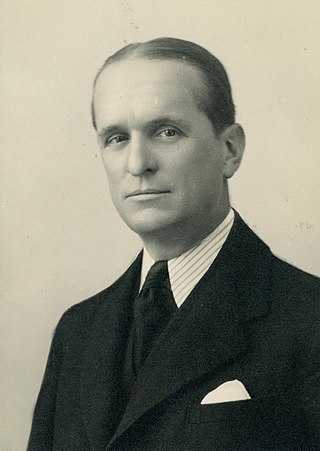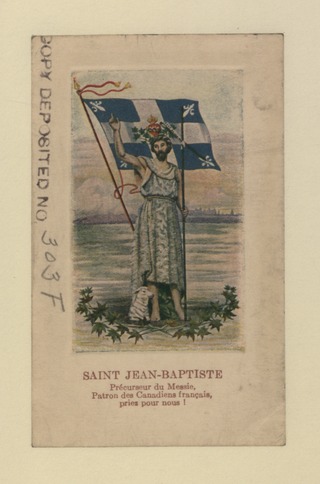
The Communist Party of Canada is a federal political party in Canada. Founded in 1921 under conditions of illegality, it is the second oldest active political party in Canada, after the Liberal Party of Canada. Although it does not currently have any parliamentary representation, the party's candidates have previously been elected to the House of Commons, the Ontario legislature, the Manitoba legislature, and various municipal governments across the country.

Adrien Arcand was a Canadian fascist politician who founded and led the far-right National Unity Party of Canada from 1934 until his death in 1967. During his political career, he proclaimed himself as the "Canadian Führer".

The National Unity Party of Canada (NUPC) was a Canadian far-right political party which based its ideology on Adolf Hitler's Nazism and Benito Mussolini's fascism. It was founded as the Parti national social chrétien du Canada (PNSC) by Nazi sympathizer Adrien Arcand on February 22, 1934. The party's activities were originally limited to Quebec, but it later expanded to Ontario and Western Canada. Party membership swelled in the mid-to-late 1930s as the party absorbed smaller fascist groups across the country. Following the outbreak of World War II, the Canadian government banned the NUPC on May 30, 1940, under the Defence of Canada Regulations of the War Measures Act. Arcand and many of his followers were consequently arrested and interned for the duration of the war.
The Canadian Union of Fascists was a fascist political party based in the city of Toronto in the 1930s with its western Canadian office in Regina, Saskatchewan.
Fascist symbolism is the use of certain images and symbols which are designed to represent aspects of fascism. These include national symbols of historical importance, goals, and political policies. The best-known are the fasces, which was the original symbol of fascism, and the swastika of Nazism.
John Ross Taylor was a Canadian fascist political activist and party leader prominent in white nationalist circles.

The Young Communist League of Canada (YCL-LJC) is a Canadian Marxist–Leninist youth organization founded in 1922. The organization is ideologically aligned with, but organizationally independent from, the Communist Party of Canada. The organization's members played a leading role in the On-to-Ottawa Trek and made up a significant portion of the Mackenzie–Papineau Battalion, which fought on the Republican side in the Spanish Civil War.

The Francist Movement was a French fascist and anti-semitic league created by Marcel Bucard in September 1933 that edited the newspaper Le Francisme. Mouvement franciste reached a membership of 10,000 and was financed by the Italian dictator, Benito Mussolini. Its members were deemed the francistes or Chemises bleues (Blueshirts) and gave the Roman salute.

François de La Rocque was the leader of the French right-wing league the Croix de Feu from 1930 to 1936 before he formed the more moderate nationalist French Social Party (1936–1940), which has been described by several historians, such as René Rémond and Michel Winock, as a precursor of Gaullism.

Fascist movements in Europe were the set of various fascist ideologies which were practiced by governments and political organizations in Europe during the 20th century. Fascism was born in Italy following World War I, and other fascist movements, influenced by Italian Fascism, subsequently emerged across Europe. Among the political doctrines which are identified as ideological origins of fascism in Europe are the combining of a traditional national unity and revolutionary anti-democratic rhetoric which was espoused by the integral nationalist Charles Maurras and the revolutionary syndicalist Georges Sorel.
Fascist movements gained popularity in many countries in Asia during the 1920s.
Fascism has a long history in North America, with the earliest movements appearing shortly after the rise of fascism in Europe. Fascist movements in North America never gained power, unlike their counterparts in Europe.
The Defence of Canada Regulations were a set of emergency measures implemented under the War Measures Act on 3 September 1939, a week before Canada's entry into World War II.

Clerico-Nationalism was a right-wing ideology current in Quebec from the years after World War I until the end of the 1950s,. Clerico-nationalism was a traditionalist, religious form of French Canadian nationalism focused on the Roman Catholic Church. In France, a similar ideology was referred to as National Catholicism.

Nazism in the Americas has existed since the 1930s and continues to exist today. The membership of the earliest groups reflected the sympathies of some German-Americans and German Latin-Americans toward Nazi Germany, embracing the spirit of Nazism in Europe and establishing it within the Americas. Throughout the inter-war period and the outbreak of World War II, American Nazi parties engaged in activities such as sporting Nazi propaganda, storming newspapers, spreading Nazi-sympathetic materials, and infiltrating other non-political organizations.
The Canadian Nationalist Party was a fascist antisemitic party founded in Winnipeg, Manitoba by William Whittaker, a British ex-soldier who had served with the British Army in India, and a dozen Anglo-Saxon war veterans, in September 1933. The party initially claimed it was for equality of all citizens, but Whittaker was soon condemning Jews in his speeches at public rallies and in the party's newspaper, The Canadian Nationalist, and its other propaganda, leading to opponents confronting him at his rallies and being violently removed, often by police. The organization was modelled on Nazi stormtroopers and would march through Winnipeg's streets wearing khaki shirts, light brown breeches, and riding boots. Whittaker's lieutenant, Harry Simkins, and other CNP members dissatisfied with Whittaker's leadership, left to form the British Empire Union of Fascists in 1934.
The Canadian League for Peace and Democracy, founded in October 1934 as the Canadian League Against War and Fascism, was an anti-fascist mass organization allied with the Communist Party of Canada and chaired by A. A. MacLeod. Including various leftist and labour groups, the league signified the Communist Party's move to a popular front strategy against fascism and was affiliated with the World Committee Against War and Fascism. The founding conference had more than 500 delegates in attendance. The organization attempted to build support across a cross-section of people outside of the Communist Party and attracted affiliations by some trade union locals about a dozen Co-operative Commonwealth Federation clubs and several youth groups. For a time, prominent social democrats such as Tommy Douglas and Frank Underhill were vice-presidents of the league, and CCF MPs Douglas and William Irvine along with a Social Credit MP and several clergymen were also involved. Through pamphlets and public meetings, its goal was "educating the Canadian population on the evils of fascism and mobilizing Canadians to protest fascism abroad and at home."









